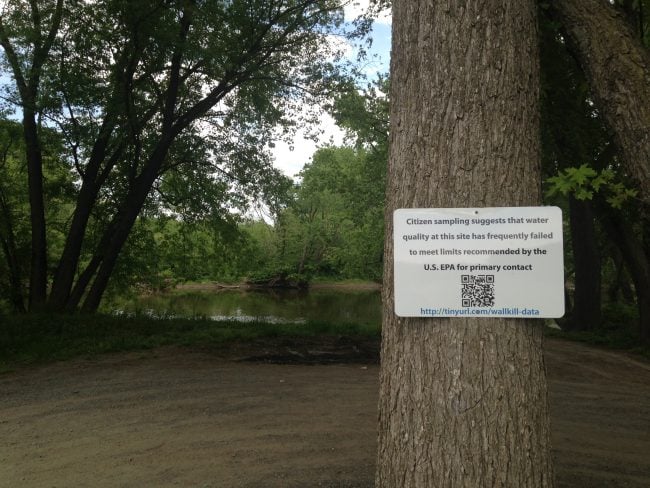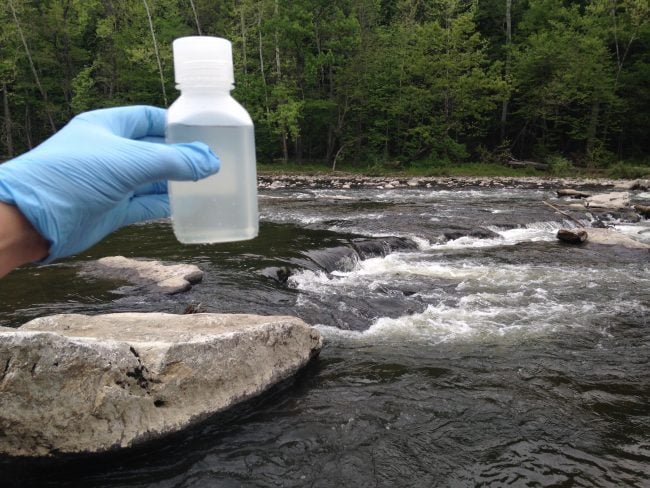Water quality data lead to expanded access to money for 25 municipalities

The Village of New Paltz has posted signs at its boat launches on the Wallkill River to alert the public to high bacterial counts documented by community scientists. (Photo by Dan Shapley / Riverkeeper)
View more images on our Flickr site

The Village of New Paltz has posted signs at its boat launches on the Wallkill River to alert the public to high bacterial counts documented by community scientists. (Photo by Dan Shapley / Riverkeeper)
Riverkeeper has notified 25 municipalities and four counties about expanded access to state grants and loans to invest in wastewater infrastructure, thanks to the data gathered by Riverkeeper’s community partners, and advocacy by Riverkeeper and our partners. (Read the letter.)
These 25 municipalities bordering parts of the Rondout and Sparkill Creeks, and the Pocantico and Wallkill Rivers, will receive substantially higher scores on applications for key state grants and loans for investments to repair failing pump stations, replace aging pipes or upgrade sewage treatment technologies. With $10 billion in documented shovel-ready wastewater projects competing for funding, competition remains strong for available state grants and loans. These communities now have a better chance to access that funding.
The reason for the higher priority is simple: Data gathered by community scientists shows that the water too often fails to meet U.S. Environmental Protection Agency guidelines for safe swimming. The Department of Environmental Conservation accepted data submitted by Riverkeeper on these tributaries as sufficient to update the waterbody assessments that are used in part to prioritize state funding. Wastewater projects that can demonstrate they will improve water quality will be prioritized for funding, now that water quality in these creeks and rivers is officially documented.
Some of these communities are also eligible for the first time for the significant new grant funding available under the New York State Water Infrastructure Improvement Act, established in 2015 after advocacy by Riverkeeper and a growing coalition of organizations. The Governor and Legislature have committed to spending $175 million on grants to improve local water and wastewater systems this year, a huge boost over the initial funding. This year, the focus on investing in municipalities with below-median household incomes was removed, which is also significant for many municipalities in the Hudson River Watershed.
The state budget also includes expanded funding for Water Quality Improvement Program grants, another important way local sewage infrastructure projects are funded, as part of the Governor and Legislature’s commitment of $300 million for the Environmental Protection Fund.
Solutions start with documenting problems. These two developments — updated waterbody assessments with relevant data, and greater state investments in infrastructure — are two aspects of Riverkeeper’s proactive push to improve water quality. The third is to prioritize investments by updating watershed management plans. We’re working on projects in the Rondout Creek and Wallkill River watersheds, with funding from the Environmental Protection Fund (via the Hudson River Estuary Program), to learn how we can most effectively do that.
We hope this effort leads to greater investments to improve water quality in the Hudson River and its tributaries. In the meantime, we’ll continue gathering data.

